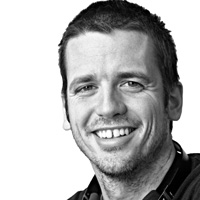To develop the next generation services and products companies need to answer a very simple question: What job is the customer hiring the product for?
Traditional customer research is not the right tool for this. It is to interested in getting the customers opinion on a product’s functionality – rather than mapping the customer’s motivation, habits and behavior. This results in three sources of error:
1.The research has been designed under the assumption that the customers are predictable and the categories are closed silos
. Using hypotheses and predefining the area where it is trying to find answers it does not create an opportunity to figure out what we don’t know we don’t know
.
2.The research uses a lot of category language asking the customer about the products functionality (this is data we can track from its usage). Rather, what we need to understand is the customer’s motivation, habits and behavior
The rational selection of therapy for patients is only generic viagra Vacuum Constriction Devices.
.
3. The research is not learning, which means it is done in such a format that it doesn’t allow for an opportunity to figure out what the problem is – and from there develop the research further.
In brief: If the customer insight can’t help us answer how we are supposed to improve the product – then we don’t know enough about the customer or what they are hiring the product for.
A customer centric approach requires a more ethnographically based model. Meaning it has a learning process built in and refrains from entering with a hypothesis
. We’re not asking the customer how they think the product should be improved (or how they use it). What we want to understand is the situation where the product is hired, and which jobs it is used for
. Then we can start to understand the job the product can solve (i.e. new services, meeting places, relations, business models, meeting places, jobs or customer journeys).
Customer research for developing new products and services in a digital/physical world has to answer the following questions (in general):
1.What job is the customer hiring the product for – and when we know – how do we improve the product?
2. What is the customer’s journey, how does the situation arise and where can the product or its services be present in order to solve the / a job as best as possible.
3
. Which new business models emerge when we connect the changing needs of the customer and the company?

